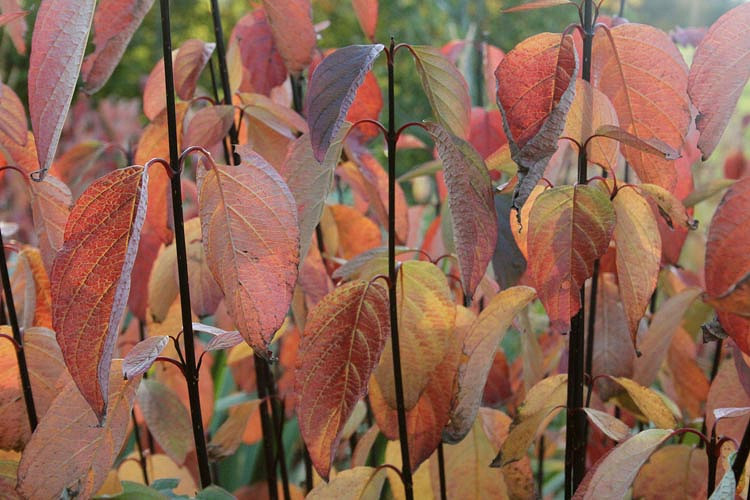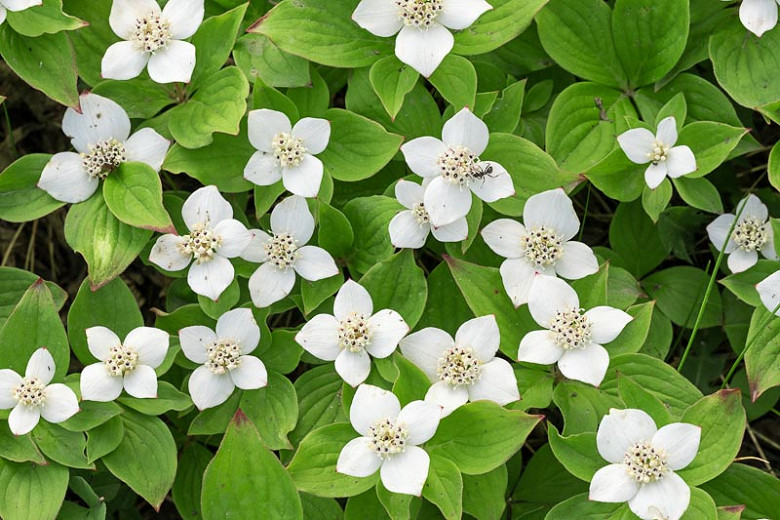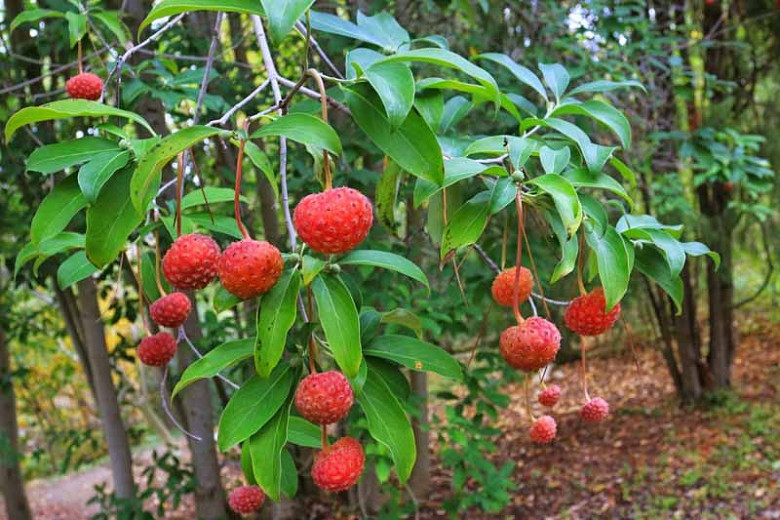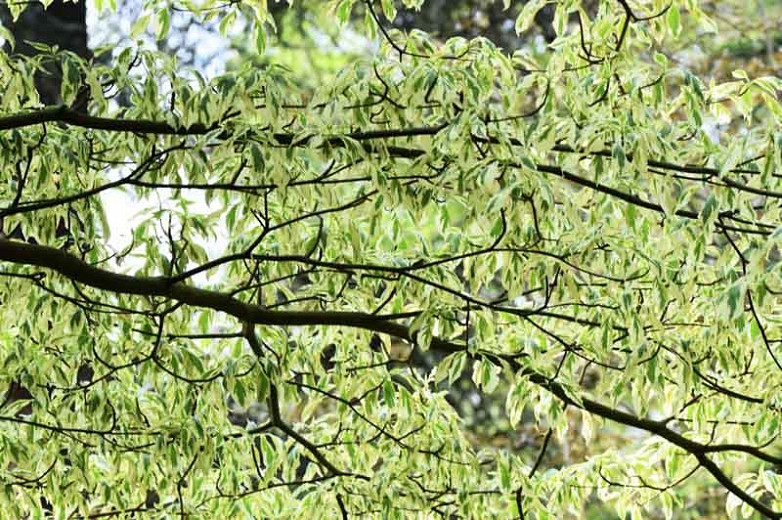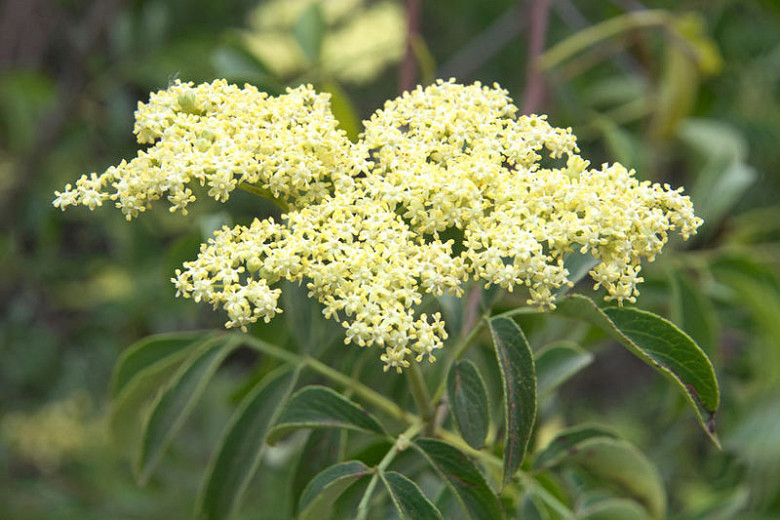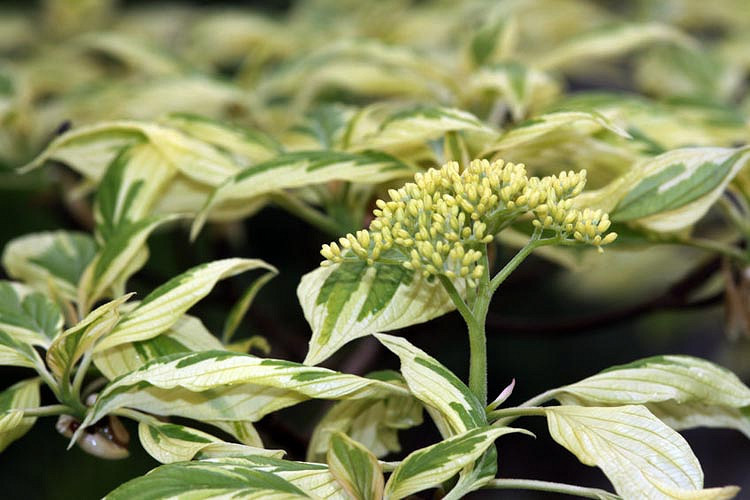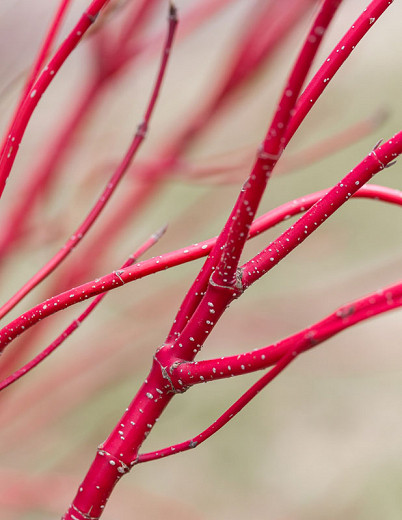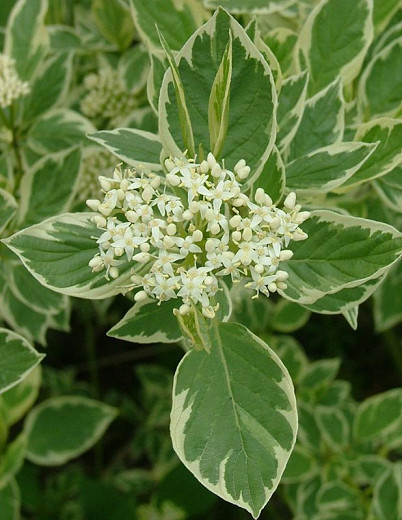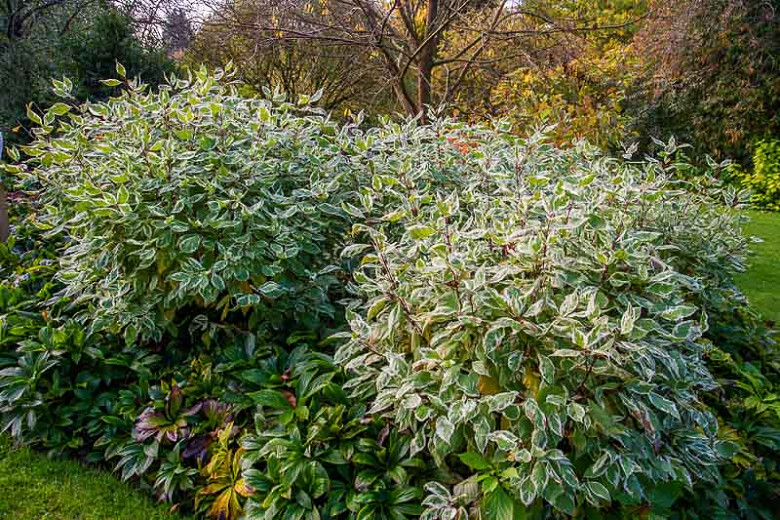Cornus alba Kesselringii (Tatarian Dogwood)
Noted for its striking shiny, deep purple-black stems in winter and multiseason interest, Cornus alba ‘Kesselringii’ (Tatarian Dogwood) is a multi-stemmed, suckering, deciduous shrub forming a thicket of dark red stems, turning dark purple in winter.
Noted for its striking shiny, deep purple-black stems in winter and multiseason interest, Cornus alba 'Kesselringii' (Tatarian Dogwood) is a multi-stemmed, suckering, deciduous shrub forming a thicket of dark red stems, turning dark purple in winter. Often numerous, they radiate beautifully from the base of the shrub. Flat-topped clusters of tiny creamy flowers, 2.5 in. wide (6 cm), appear in late spring and sometimes sporadically flower in summer. While not especially showy, they attract happy butterflies and pollinators and give way in midsummer to clusters of white berries, that are greedily devoured by birds. The summer foliage consists of elliptic to ovate, mid to dark green leaves, that turn red and purple in fall.
- Grows at a fast rate, typically up to 4-6 ft. high (120-180 cm) and 3-6 ft. across (90-180 cm).
- Performs best in full sun to part shade, in organically rich, medium moisture, well-drained soils. It is not fussy about soils provided they are kept evenly moist and well-drained. Tolerates many conditions, including wet soils, dry soils, poor soils. It is more vulnerable to diseases in hot summer climates (south of USDA Zone 7)
- Generally disease free, Cornus alba may be affected by aphids, mussel scale, horse chestnut scale and glasshouse red spider mite.
- Easy to grow, easy to care for, deer and rabbit resistant.
- Cornus alba looks spectacular when massed to emphasize and accentuate the cold season stem color. Great choice for shrub borders, as an informal hedge or screen, for foundation plantings, banks and slopes (erosion control), or planted in naturalistic plantings where it can freely spread and form thickets. Great for coastal gardens or cottage gardens too!
- While pruning is not required, it should be noted that the best winter stem color appears on new growth. For the best display, cut the stems flush to the ground every 2-3 years in early spring, just as the leaf buds start to swell. This radical pruning, however means that you will have a bare spot in the garden for a few weeks and miss the creamy-white flowers or attractive berries since they only form on second-year growth. Alternatively, if severe pruning seems to onerous, one quarter or one third of the oldest stems could be pruned in early spring of each year, to stimulate the growth of new stems.
- Propagated primarily by rooted stem cuttings. Promptly remove root suckers if colonial spread is undesired
- Cornus alba is a species of dogwood native to eastern and central Asia. It is widely grown as an ornamental plant, whose available cultivars have been selected for their winter glowing colors.
Requirements
| Hardiness | 2 – 7 |
|---|---|
| Heat Zones | 1 – 8 |
| Climate Zones | 1A, 1B, 2A, 2B, 3A, 3B, 4, 5, 6, 7, 8, 9, 14, 15, 16, 17, 18, 19, 20, 21, 22, 23, 24, A2, A3 |
| Plant Type | Shrubs |
| Plant Family | Cornus – Dogwoods |
| Exposure | Full Sun, Partial Sun |
| Season of Interest | Spring (Early,Mid,Late)Summer (Early,Mid,Late)FallWinter |
| Height | 4' – 6' (120cm – 180cm) |
| Spread | 3' – 6' (90cm – 180cm) |
| Spacing | 72″ (180cm) |
| Water Needs | Average |
| Maintenance | Low |
| Soil Type | Chalk, Clay, Loam, Sand |
| Soil pH | Acid, Alkaline, Neutral |
| Soil Drainage | Moist but Well-Drained, Well-Drained |
| Characteristics | Plant of Merit, Showy |
| Tolerance | Deer, Rabbit, Dry Soil, Wet Soil |
| Attracts | Birds, Butterflies |
| Garden Uses | Banks and Slopes, Beds and Borders, Hedges and Screens |
| Garden Styles | City and Courtyard, Coastal Garden, Informal and Cottage, Prairie and Meadow, Traditional Garden |
